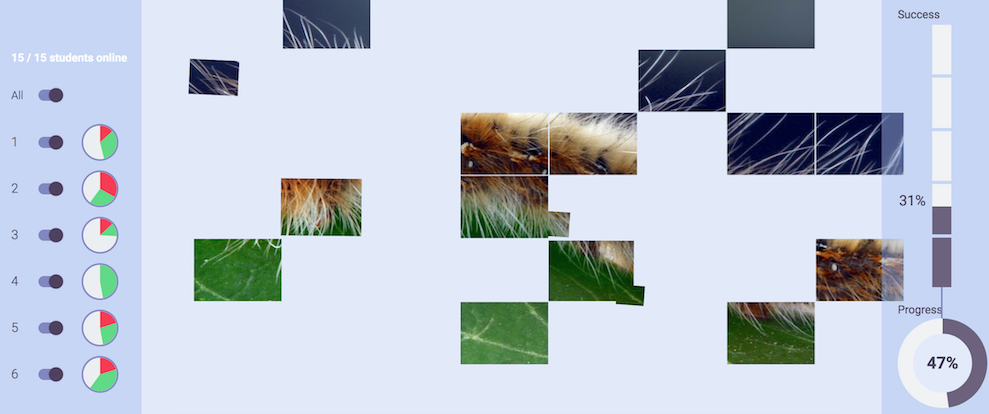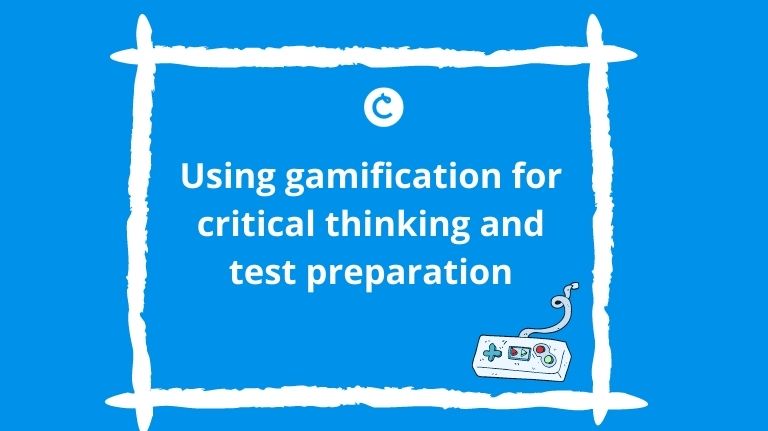Using gamification for critical thinking and test preparation
We recently had an interview with Scott Houston, an education consultant at Educators Cooperative. Scott has played a part in the evolution of Classtime’s gamification solution (Collaborative Challenges), sharing insights from his years of experience working with teachers and schools to innovate the classroom and create a more personalized learning environment for students. Here, he talks with us about his experience gamifying the classroom and discusses how Classtime’s Puzzle Challenges can be a great way for teachers to promote critical thinking and prepare for tests.
Can you tell us a bit about your background and experience with classroom games and gamification?
I was a teacher for about 15 years in and out of the public school system and in charters as well. While teaching I had to do several review sessions to get students ready for tests and I was always developing new games for the classroom. I would usually base them on existing ideas like Clue, Battleship, Connect Four, etc… My tenets for games in the classroom was always the same. Every student must be involved with every review question. All games were conducted in groups where students could discuss problems collaboratively. Once I became a consultant I would model some of these games for other teachers and eventually, I wrote a book where I put many of my games into them.
What initially intrigued you about Classtime’s Challenges?
I really liked the initial Collaborative Challenges for their effectiveness at using gamification to engage students, the simplicity in setting up the challenges around a lesson, and the variety of question types that Classtime offers to challenge students.
I used to create predictive activities for my students to promote critical thinking where I would put a transparency of a picture on my overhead projector and then cover it with construction paper so students couldn’t see the image. Then I would cut out certain areas of the construction paper to expose parts of the image and have students try to use evidence to figure out what the picture was. If students got it correct on the very first guess I would give them 5 points, but I wouldn’t tell them if they got it right or wrong so they would keep looking for evidence that either supported their belief or changed their guesses. I thought implementing this type of activity into a Collaborative Challenge would be a great way to promote students’ critical thinking while making the teachers’ life a bit easier.
How do teachers and children react to the Puzzle Challenges?
Students react very well to them. Some say they can see it right away whereas others can’t pick it up quite as quick. The trick is to stop and have the students evaluate after every question. As for teachers, many of them need to see it modeled before they buy into it. If they don’t see the gamified version of it then they don’t get what the big deal is of a picture being revealed slowly. However, when they see it modeled as a game they really like it because they begin to see the possibilities of increasing student engagement, improving citing with evidence, thinking about using their own pictures that would fit with their curriculum. Students get very excited with each new puzzle piece revealed and you can hear them talking about what they think the picture is and why.
 Gamification in the classroom: every correct answer reveals a part of the puzzle!
Gamification in the classroom: every correct answer reveals a part of the puzzle!Any advice for other educators on how to pick a great Puzzle Challenge topic?
The great thing about puzzle challenges is that they can be used with any topic. I would actually recommend this because if I were studying astronomy and I had a picture of the solar system, students would figure out the puzzle much quicker because they know the picture is somehow connected to the topic and therefore are using less visual evidence to make guesses at the picture. Good pictures to use are ones that are very close up and that don’t have a lot of background. I used the Taco puzzle while doing a math question set. And the best thing about the Puzzle Challenge is that teacher can choose their own pictures and upload them into the puzzle format, giving them complete control of the content.
Classtime can help you get started with gamification in the classroom today:

